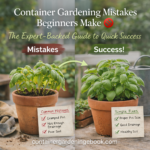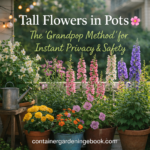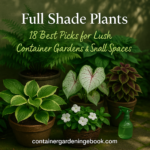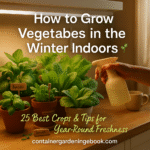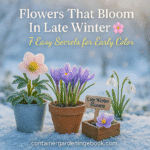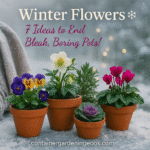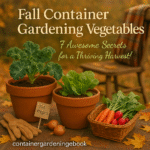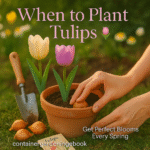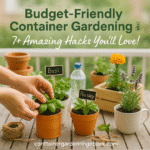Container Gardening
5 Container Gardening Mistakes Beginners Make: The Expert-Backed Guide to Quick Success
Disclosure: This post contains affiliate links. If you use these links to buy something, I may earn a commission at no extra cost to you. This helps support the blog and keeps the garden growing!
Container gardening for beginners doesn’t… Continue reading
Tall Flowers in Pots: 7 Powerful Tips for Instant, Stunning Privacy
Disclosure: This post contains affiliate links. If you use these links to buy something, I may earn a commission at no extra cost to you. This helps support the blog and keeps the garden growing!
I’m not a “naptime gardener”… Continue reading
13 Best Full-Sun Flowers for Pots: The “Unkillable” List for Busy Moms
Transform your baking hot balcony into a blooming oasis—without sacrificing your sanity.
Disclosure: This post contains affiliate links. If you use these links to buy something, I may earn a commission at no extra cost to you. This helps support… Continue reading
Full Shade Plants: 25 Best Picks for Lush Container Gardens & Small Spaces
Turn your darkest corners into a “Moody Jungle” sanctuary with these expert-approved full-shade plants perfect for balconies and patios.
Disclosure: This post contains affiliate links. If you use these links to buy something, I may earn a commission at no… Continue reading
How to Grow Vegetables in the Winter Indoors: 25 Best Crops & Tips
Disclosure: This post contains affiliate links. If you use these links to buy something, I may earn a commission at no extra cost to you. This helps support the blog and keeps the garden growing!
Introduction: The Garden Doesn’t Close… Continue reading
Flowers That Bloom In Late Winter: 7 Easy Secrets
Disclosure: This post contains affiliate links. If you use these links to buy something, I may earn a commission at no extra cost to you. This helps support the blog and keeps the garden growing!
I’m writing this from my… Continue reading
Winter Flowers: 7 Ideas to End Bleak, Boring Pots
Disclosure: This post contains affiliate links. If you use these links to buy something, I may earn a commission at no extra cost to you. This helps support the blog and keeps the garden growing!
Let’s be honest. It’s winter.… Continue reading
Fall Container Gardening Vegetables: 7 Awesome Secrets
When to Plant Tulips in Containers: 5 Secrets for Amazing Blooms
Affiliate Disclosure: This post contains affiliate links. If you purchase through these links, I may earn a small commission at no extra cost to you. I only recommend products that will add value to your gardening journey. I appreciate your… Continue reading
Budget-Friendly Container Gardening: 7+ Amazing Hacks!
Affiliate Disclosure: This post contains affiliate links. If you purchase through these links, I may earn a small commission at no extra cost to you. I only recommend products that will add value to your gardening journey. I appreciate… Continue reading
